How to plant an apple tree in the wild?

Varietal apples and wild birds are very different - the latter are more resistant to various diseases, they are easier to tolerate frost and sunburn. This is the reason why gardeners often use them as a rootstock. Thanks to this, the immunity of the tree becomes stronger, and the fruits are tastier and grow in huge quantities. But in order to achieve such results, you must follow clear instructions and follow all the recommendations of specialists, especially if you have not done this before.

Features of vaccination
Almost everyone dreams of making a strong fruitful tree from a simple garden apple tree. And for this, the wild will serve as an excellent helper... We are talking about a small tree that performs the task of the foundation during the grafting of an elite variety. This can be done both on a young and on a more mature, adult fruit plant. The main advantages of this manipulation include ensuring the resistance of the tree to the influence of a variety of factors, which include temperature drop, high humidity, mechanical stress from precipitation.
The peculiarity of the operation is that the stem of another is grafted to one apple tree so that after a certain period it grows to its base. The root system and stem represent the stock.


There are certain reasons that lead to the need for this procedure. If the trees begin to dry out, fertility has decreased, or the garden is sick, such manipulations should be carried out. Experienced gardeners never stop there, they are interested in new varieties, so the wild can help solve this problem. Several varieties of apple trees can be grafted onto such a tree, which is a great advantage.
Despite the fact that this is a simple procedure that even a beginner can handle, it is important to follow the step-by-step instructions.

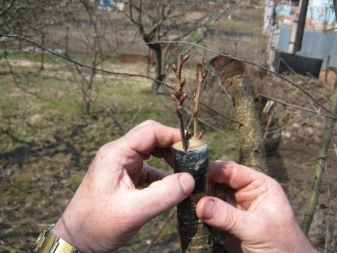
How to distinguish a wild game from a cultivated apple tree?
The main difference between wild and varietal apple is as follows. In the latter trees, a bend with a hemp or a round cut can be found on the root collar. If the stem is straight and the stem is powerful, then the seedling was originally grown in the forest. If a seedling grows from a thick root, then this is a scion, for sure, it was taken from an already grafted apple tree. Wild fruit trees can be found in a wide variety of places, be it a forest, the edge of a road, or even a park. They are more resistant to frost, bloom beautifully in the spring and boast a rich harvest, but the fruits are small and often not as tasty as we would like.
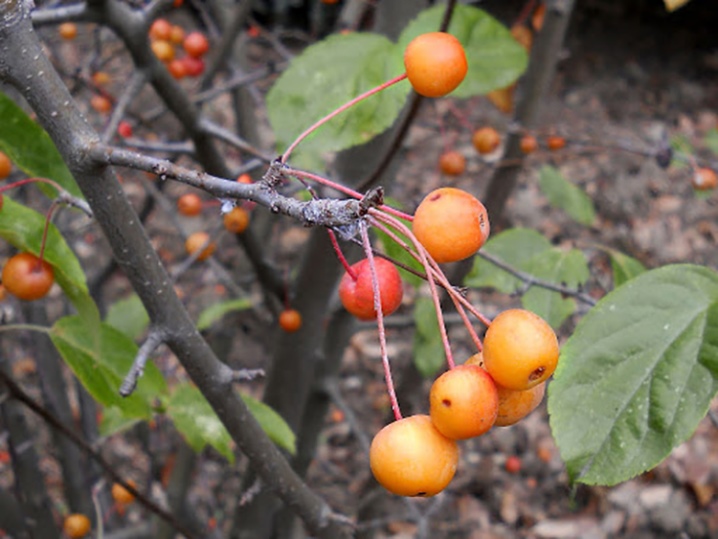
Timing
A good grafting time for beginner gardeners is springtime, although this can be done even in the fall, there are certain differences in the procedure. In the warm season, trees have strong immunity, they receive enough nutrients that contribute to the rapid maturation of the buds, which is why the first leaves are formed. If you do the scion during this period, you don't have to worry, the game will take root well, and the apple tree will be less injured.
The cuttings need to be grafted after the end of the frost, when the temperature in the yard is already above zero. For such manipulations, the best period is the end of March or the beginning of April. If engraftment has not taken place, you can repeat the procedure in the middle of summer.In the case of choosing the autumn season, it is important to be in time before the first frost. In addition, the circulation of sap in the trunk becomes much slower, so the tree is more susceptible to diseases. It is important to make sure that the scion has time to take root before frost. If you have a greenhouse, then you can carry out the scion even in winter, the main thing is that there is no temperature below zero. In such cases, experts use wild boar, which they themselves have grown from a bone at home.
Do it in spring or autumn, the choice is yours, the main thing is that the temperature outside the window allows you to carry out your plans.

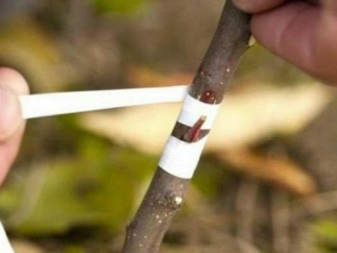
How to prepare rootstock and scion?
This is a simple procedure if you follow all the rules.... Harvesting of apple branches for further grafting is carried out around November, that is, before the onset of the first frost. For the scion, you will need several healthy summer shoots, the wood of which has already ripened. It is recommended to cut from the south side in the middle of the crown, the length should not be shorter than 30 cm, the diameter is about 0.7 cm. It is important to make sure that there are at least 5 buds on the branches.
Proper storage is essential, otherwise the workpiece will dry out and become unusable. Therefore, you will need to wrap the branches in a damp cloth, put them in the refrigerator or leave them in the cellar. If this is not possible, you can cover the bundles with rags, leaving them outside, but cover them with snow, and then pour sawdust onto a snowdrift. Fiberglass solves the problem with rodents.

Basic ways
To plant an elite variety on a wild apple tree with your own hands, you must follow the instructions correctly, in addition, there are several methods to choose from.
Using a grafting pruner
Check on the branches of any shrub, as you will need to learn how to make a quality cut. Using a sharpened tool, you need to make mirror cuts on the scion and rootstock so that they fit together like puzzles. Do this carefully, the bark should not lag behind. The graft is cut over the kidney, and the joint is wrapped with tape. Prepare a garden pitch or a muddler in advance to lubricate open areas. Put on the bag and secure it with tape.

The main advantages of this method include the fact that thanks to the pruner you will be able to make a cut of any shape, and the planes will be connected almost perfectly. The branch will turn out to be strong and stable, even if a small bird sits on it. After the operation, after 3 weeks, the kidneys will begin to wake up and germinate, and after another 2 weeks, you can already remove the polyethylene.
Under the bark
This is an easy way, but it is important to follow the rules. This method is used quite often, especially if the role of the scion is played by a large branch with thin cuttings. First of all, the bark is cleaned of dust and dirt, after which a vertical cut of 4 cm is made using a garden knife. If you want to grow several at once, leave a distance between the cuttings. Press firmly and process with a pitch, then fix with electrical tape, as described above.

Into the cleft
This option is suitable if there is a big difference between the cutting and the rootstock diameter. The graft is connected to the stump only when the root of the seedling is still viable. If the trees were cut down a long time ago, they are unsuitable for such purposes. You should start with a cut in the rootstock (with a garden knife) and splits on the stump (with an ax), and so that the latter does not close, insert a screwdriver or wedge there. Up to 5 buds should be left on the handle, forming a double-sided wedge-shaped incision. Insert the cleft into the scion, making sure they are tightly bonded.
At the finish line, all sections are greased with pitch and wrapped in polyethylene.

Budding
This is the most popular method when it comes to young seedlings. The role of the scion is performed by the buds, the procedure is suitable for autumn and spring. Pick a sturdy branch in the wild that is not damaged or low above the ground. Make several T-cuts in the bark and pull it apart.The bud is cut from the cutting along with the base so that it can be fixed. Do not connect them from the south, so that the sun's rays will not destroy the fruits of your work. After connecting the peephole with the stock, wrap everything with foil. After 2 weeks, it is necessary to check - it is enough to lightly touch the kidney, and if it holds on tightly, then everything went well.

Copulation in the butt
This method is only suitable when the diameter of the branches of the cutting and the wild is the same. It is necessary to make the same cuts along an oblique line, then connect and wrap with electrical tape so that they do not move under the influence of the wind. When copulating, it is important to make sure that the edges fit snugly, this directly affects the result.
It is important to note that the sections must not be touched during the procedure.

Improved copulation
This copulation differs from the usual one in execution, it is a little more complicated, therefore, beginners do not always cope with it. On a branch of a wild apple tree and a handle, you need to make the same oblique cuts, and then form protrusions identical to each other, which is not easy. The fixing is carried out by the same principle as always.
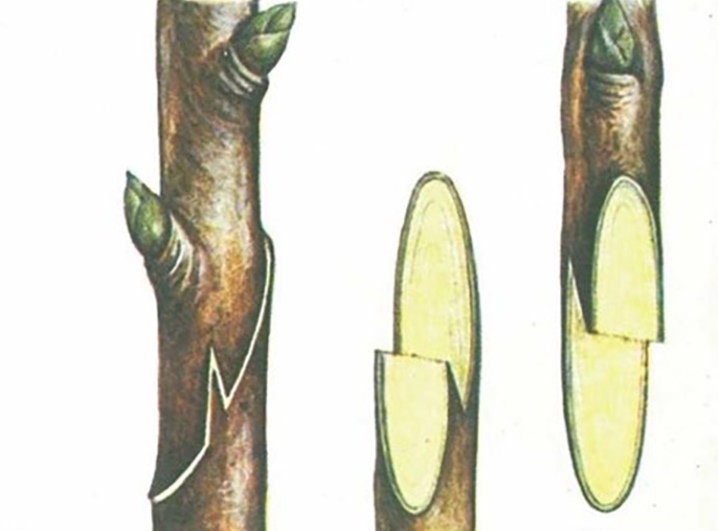
Follow-up care
If you have chosen a suitable vaccination option for yourself, this does not mean that everything is ready. To grow a beautiful, healthy, and most importantly, fruit-rich apple tree, you need provide her with good care. As mentioned above, you will need to check how tightly the cuttings are fixed, so an inspection will need to be carried out daily. If everything is in order, the buds begin to swell, and leaves form from them. It is important to remove the cuttings that did not take root, and cover the damaged areas with putty, and repeat the grafting procedure. In places below the scion, apple trees do not grow, so such branches are removed so that they do not absorb nutrients and do not interfere with the growth of the rest.

If engraftment has not yet occurred, it is forbidden to remove the protective polyethylene with electrical tape, the material itself will move as soon as the stalk begins to grow and the buds swell. The seedling needs to be watered, loosened the soil around the tree and treated from various pests. You will need to find remedies for the prevention of diseases, which should be carried out in spring and autumn.

Check the soil - if the top layer begins to dry out, water it, and to maintain moisture, mulch using straw, wood chips or fallen leaves. If the scion is on the south side, it is important to provide sun protection. The crown begins to form a year after grafting, and during this time it is necessary to carefully monitor the tree and its condition.

As you can see, the process is simple, but it requires attention and accuracy. If you follow all the recommendations, then the development of the apple tree will begin at first. When ants and other insects appear on the band, they must be destroyed. During the dry season, water the apple tree once every one and a half weeks.
During the season, phosphorus-potassium fertilizers should be applied, which improve adhesion.
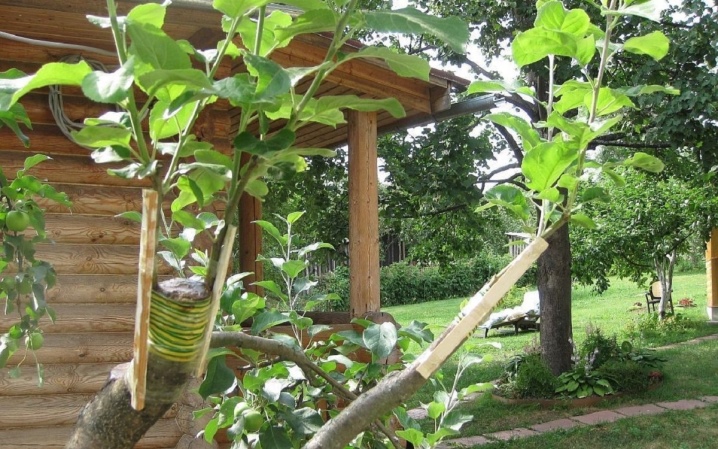
Possible mistakes
No one is immune to mistakes, especially if you do it for the first time, but experience comes with diligence. To avoid common problems, it is enough to follow the technology. As mentioned above, it is important to use good tools that will ensure smooth cuts and will not rip the wood into fibers. Dirt and germs on the blade can be harmful if left untreated before use. If the cut is crooked, a snug fit will not work, which means that grafting will not take place. In such work, the main thing is not to rush, and to be scrupulous. Observe the storage rules so that your efforts are not in vain. Fix the tape or tape with the adhesive side out so that it does not peel off the bark while removing the tape. If you follow all the prescriptions and choose the appropriate vaccination option, the result will not be long in coming. Good luck!

A master class on grafting an apple tree on a wild can be seen in the following video.













The comment was sent successfully.